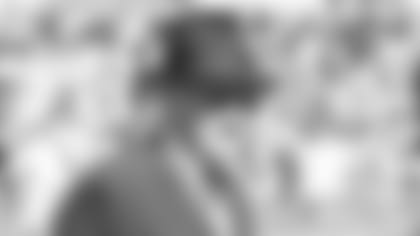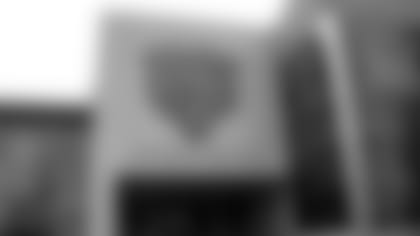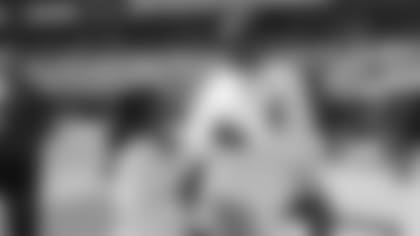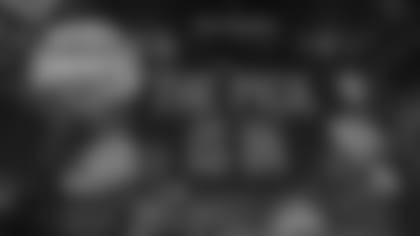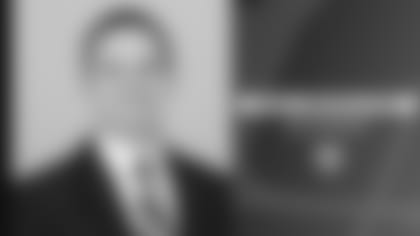The instrumental role that George Halas played to help create the NFL has been well-documented. Less known is that Papa Bear was also a pioneer in the first professional basketball league in the United States.
Halas founded the Chicago Bruins in 1924 and they joined the American Basketball League in 1925 for its inaugural season, five years after the NFL had been born. NFL president Joe Carr organized the nine-team basketball league and served as its president.
Halas wasn't the only ABL owner with NFL ties. The fledgling league included the Cleveland Rosenblums, owned by Max Rosenblum, a part owner of the NFL's Cleveland Bulldogs; and the Washington Palace Five, owned by future Washington Redskins owner George Preston Marshall.
Other ABL teams were the Boston Whirlwinds, Brooklyn Arcadians, Buffalo Bisons, Detroit Pulaski Post Five, Fort Wayne Caseys and Rochester Centrals. The first ABL season was divided into two halves, with the winner of the first half playing the winner of the second half for the championship. The Rosenblums defeated the Arcadians 3-0 in a best-of-five series for the first title.
In his autobiography "Halas by Halas" that was published in 1979, Halas wrote about his venture into professional basketball.
"I didn't have to look far for a coach I could afford. I chose myself," Halas wrote. "We played in an armory, and we did not do well."
The Bruins finished in seventh place in both halves of the inaugural ABL season, with records of 6-10 and 3-11, respectively.
"Financially I broke about even," Halas wrote. "I considered that acceptable for the first year of a venture."
Laurie Walquist, a Bears quarterback for nine seasons from 1922-31, also played for the Bruins. The Rockford native had starred in both football and basketball at the University of Illinois, Halas' alma mater.
Also playing for the Bruins in their first ABL season was Robert Jerome Dunne, who later became a Chicago circuit court judge. Dunne earned varsity letters in football, basketball and track at the University of Michigan. His father, Edward F. Dunne, served as mayor of Chicago from 1905-07 and Governor of Illinois from 1913-17.
In 1926, Halas hired John "Honey" Russell to coach the Bruins and signed star player Nat Holman for $6,000 for half a season. Russell played pro basketball for 28 seasons and was the first coach of the NBA's Boston Celtics from 1946-48. He was inducted into the Naismith Memorial Basketball Hall of Fame in 1964.
One of the Bruins' top players during their first three seasons was Ike Mahoney, who also played five years in the NFL with the Chicago Cardinals, a fierce crosstown rival of the Bears. Mahoney played for the Cardinals in a 0-0 tie against the Bears on Thanksgiving Day 1925 at Wrigley Field in a game that was most noteworthy for being legendary running back Red Grange's NFL debut.
Milas "Slim" Shoun, who spent part of the 1927-28 season with the Bruins, was the ABL's tallest player at 6-11. In a Chicago Tribune article from Jan. 19, 1928, it was noted that Shoun could "reach within eight inches of the iron loop" and that when he "jumps for the netting he looks down to get the range and drops the ball into the basket."
The story also stated that Shoun would be expected to not only guard the opposing team's center but speculated that he likely would be benched if he "has trouble unjointing his gangling legs and crouching sufficiently low to stop the smaller lads as they play on the floor beneath him."
The Bruins played their home games at several small venues throughout the city, including the Broadway armory. It was a monumental event in 1929 when they played their first contest in the cavernous Chicago Stadium. The Chicago Tribune reported on Nov. 28, 1929 that the game the night before against Cleveland had drawn 5,000 fans.
Writer Wilfrid Smith described the building as "the world's biggest stadium" and noted "that first crowd never quite forgot its magnificent surroundings. Accustomed to being jammed into small spaces, seated on circus bleachers, it was most unusual to have spacious accommodations and, more exciting, to be ushered to those seats by attendants in evening clothes."
In 1931, Halas—who was known as a great innovator in pro football—had a special white basketball created for a Bruins game against the Rochester Centrals. The Chicago Tribune reported that the "ghost ball" was being introduced "in an effort to help the crowd keep track of the ball, which sometimes becomes difficult because of the fast passing."
The Bruins folded following the 1930-31 season as the Great Depression gripped the country. Halas revived the Bruins in 1939 to play in the National Basketball League (NBL) but disbanded the team again in 1942 during World War II.



